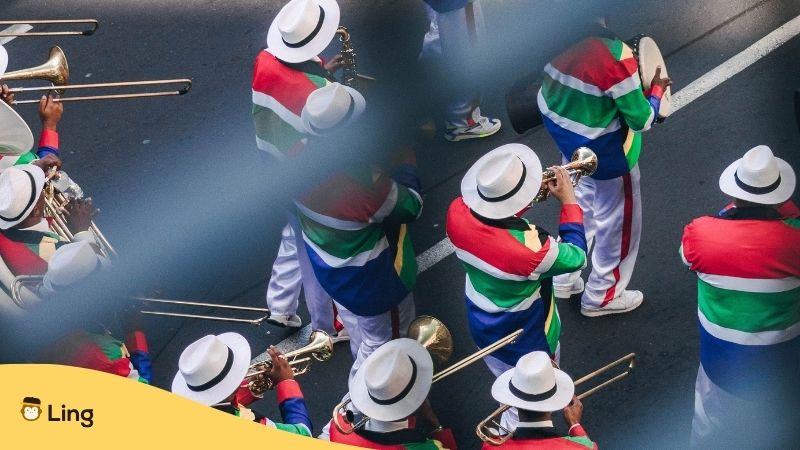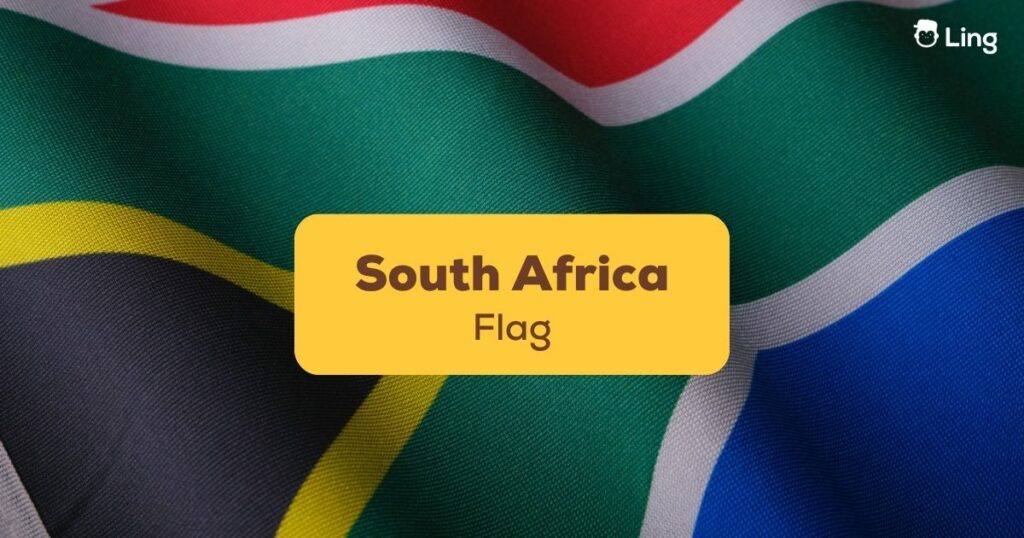The brightly colored South African flag, with its distinctive Y-shaped design, is one of the most recognizable flags on the planet. It is also one of the newest. This time we will be taking a look at the history and meaning behind this symbol of modern South Africa. We’ll see how its crazy, colorful, bold design is as striking as the country’s journey from oppression and apartheid to democracy and unity in diversity.
A Brief History Of The South Africa Flag
The sometimes confusing story of the modern South African National Flag is closely linked to the nation’s tumultuous history. Before the current flag we have all come to recognize as South African, the country had several flags, each representing a different era in its history.
Pre-Union Flags
The Dutch East India Company (the conglomerate that monopolized global trade at the time), which set up the Cape Colony in 1652, introduced the orange, white, and blue stripes of the Dutch tricolor as its flag. The British then came along, showing everyone what monopolizing global trade was really all about, and the Union Jack flew over the Cape Colony and, later on, the entire Union of South Africa.
The Union Flag (1910-1928)
In 1910, the Union of South Africa was formed, bringing together various British colonies and Boer republics. The flag of this new nation featured the Union Jack in the canton (upper left corner) and a red Ensign with the South African coat of arms. The flag design caused tensions, as the British colonies wanted a purely Union Flag, and the Afrikaners were not happy with what they considered a British flag hoisted over South African government buildings on land and on ships at sea.
The Apartheid Era (1928-1994)
During the apartheid era, South Africa’s flag continued to feature the ubiquitous Union Jack and the shield from the SA coat of arms. In 1928 a flag based on the Dutch “Prince’s Flag” was adopted, with orange, white, and blue horizontal stripes and three miniature flags (the British Union Flag, the Orange Free State Flag, and the Transvaal Vierkleur) centered in the white stripe. However, this flag was a symbol of division, as apartheid policies enforced racial segregation and discrimination. Since 2019, the use of this flag has been banned in South Africa because it is seen to represent white supremacy and is thus considered hate speech.
The Birth Of The New South Africa Flag
The end of apartheid in the early 1990s was generally recognized as positive by most people around the world. It was hoped that the abolition of apartheid would usher in a new era of hope, reconciliation, and democracy for South Africa. As part of this transformation, it became necessary to come up with a design for a new flag. It would ideally leave behind the divisive flags of the past that didn’t have anything to do with unity and which, like the Confederate flags of America, would soon become the banner for racism.
The design of the new South African flag resulted from a nationwide competition. Over 7,000 entries were received; the winning design was selected from a shortlist in March 1994. The flag was officially adopted on 27 April 1994, the day that Nelson Mandela became South Africa’s first black president.

The Symbolism Of The South Africa Flag
The new national flag is a blend of colors and symbols:
Six Colors
The flag features six colors: black, yellow, green, white, blue, and red. These colors are arranged in two horizontal bands of equal width, with a black triangle on the hoist side (next to the flagpole). The combination of these colors is “a synopsis of principal elements of the country’s flag history,” according to the South African government.
The Y-Shape
One of the most distinctive elements of the South African flag is the Y-shape that extends from the flag’s hoist side to its fly side. This “Pall of Concord” represents the convergence of diverse elements within South African society.
The Black, Green, And Yellow
The black, green, and yellow bands of the flag are lifted from the flag of the African National Congress (ANC). This party was integral in ending apartheid and introducing the beginnings of democracy, even if there was a bumpy road ahead.
The Red, White, And Blue
The red, white, and blue bands symbolize South Africa’s colonial history and its connection to the British Commonwealth. It may not really be the point of a flag meant to represent a new beginning, but at the time, some still thought the Commonwealth a good thing.
Unity In Diversity
The flag’s design is supposed to be a visual representation of the nation’s motto: “Unity in Diversity.” Its extremely distinctive design supposedly reflects the idea that despite the country’s complicated ethnic, cultural, and linguistic backgrounds, its people will come together as one nation.

The South African Flag In Action
Here are some ways in which the flag is used and celebrated:
National Holidays And Events
The flag is prominently displayed throughout the year, but it is particularly noticeable during national holidays and significant events, such as Freedom Day (April 27), Heritage Day (September 24), and Reconciliation Day (December 16).
Sports
South Africa is known for its passion for rugby, cricket, and soccer. The flag is draped over the shoulders of athletes and fans while they fight it out with other nations at international competitions, such as the Rugby World Cup and the Olympic Games.
International Relations
The South African flag is seen as a symbol of the country’s commitment to democracy and human rights. It is flown proudly above embassies and consulates, and at international events to represent South Africa on the global stage.
The South African flag is an emblem of a nation’s journey from division to unity, from apartheid to democracy. As South Africa continues to tackle the inevitable challenges of the 21st century, its flamboyantly distinctive flag serves as a colorful symbol of the nation’s commitment to building a brighter, more inclusive future.
Improve Your Afrikaans With The Ling App
The Ling app is a language learning tool designed to provide you with all you need to master all aspects of Afrikaans quickly. From reading and writing to everyday conversation, you will conquer the language as its interactive lessons keep you hooked and engaged.
So head to Google Play and the App Store to download the Ling app and start your language journey today!


































































